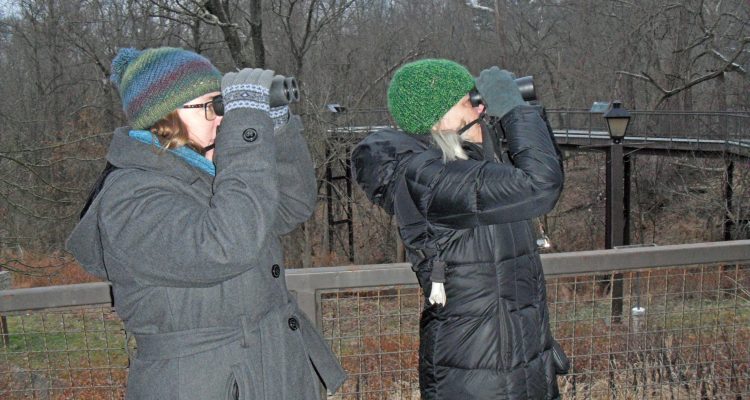That was just in the first few minutes.
And, it involved only two of the 30-some birders who fanned out across Wheeling and surrounds on Dec. 18 to count birds as part of the National Audubon’s Society’s 120th such event.
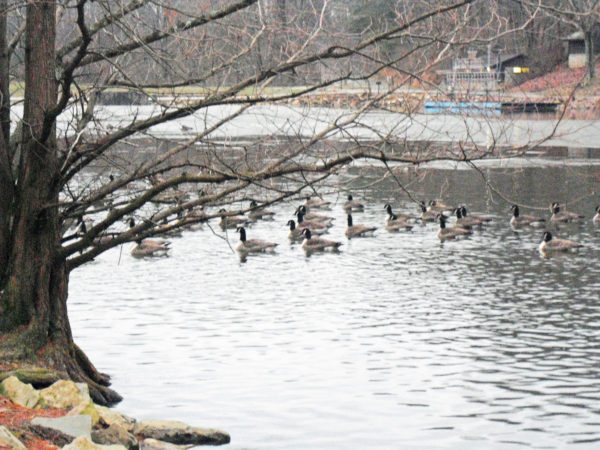
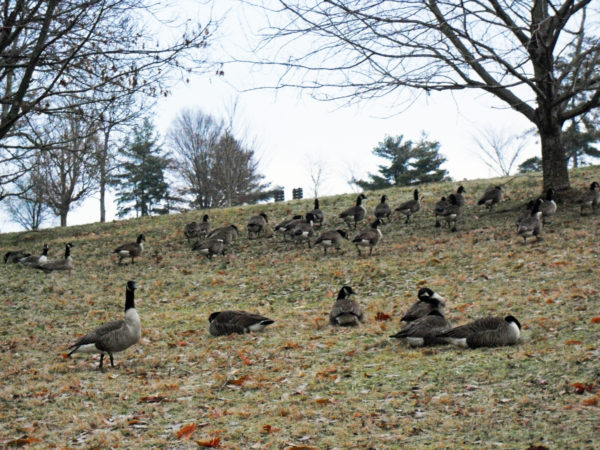
ON THE LOOKOUT
“I love bird counts,” Molly Check enthused while handing out the last sheaf of territory maps, handily sealed in a weather-proof sleeve.
With that, Check, director of Oglebay Institute’s Schrader Environmental Education Center, and her bird-loving aunt, Rachel Check of Pittsburgh, were out the door.
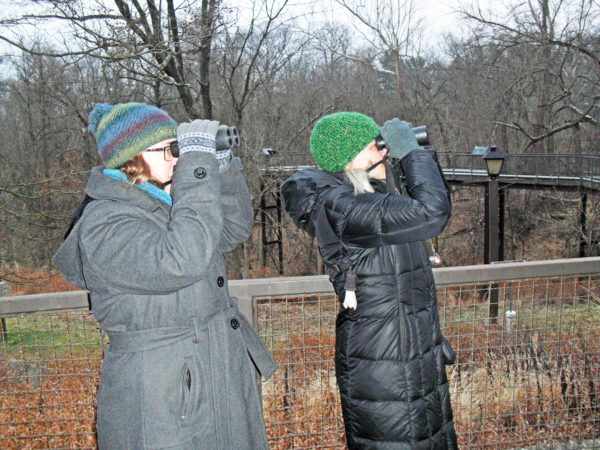
“I hear someone,” Check said with a smile, just a few steps away from the Oglebay Park building. The Checks immediately raised their binoculars to their eyes and began searching for the source of a dull thrum, thrum, thrum coming from the woods.
A short debate ensued. “Is it a downy?” Check wondered.
“He’s kind of big,” Rachel Check countered.
They looked some more, no easy task on a morning so gray that colors seemed to blur into nothingness, leaving little but a silhouette to see. Still, a feather marking or two decided the bird’s identity among seven possible species of woodpeckers that live in West Virginia.
“I think it’s a downy,” Check finally said, recording the sighting with a freeze-proof pencil and tiny tablet of paper stashed in one parka pocket. “He’s just puffed up a little bit with the cold.”
As, were the Checks, who were wearing multiple layers in order to spend several hours outdoors in the sub-freezing weather. Rachel Check’s binocular strap even included a silky tissue to keep her view clear if the weather turned worse.
Not that they seemed to mind going to such trouble. The downy duly tallied, they were off on a loop that included the feeders behind Schrader and nearby Schenk Lake.
That’s all of Oglebay that was in their territory. Another birder, a former Schrader naturalist, was working other sections of the park, including back trails. The Checks would spend the rest of their day hopping in and out of a car, counting in such areas as the lock and dam on the Ohio River and generally birding like they really meant it.
The official tally for Audubon is paramount to science, Check said. She acknowledged a mallard duck plushie toy is also at stake.
It seems Check has an ongoing competition with a couple of birder friends. Each year, they count how many species they have seen, and the one with the highest count gets possession of the plushie. One friend now has a bit of an advantage, she acknowledged with a grin. He recently moved to the shore of Lake Erie and has already topped 200 species for 2019.
“It’s a major flyway,” she said resignedly.
The Checks were hoping for a team total of two dozen species on the day of the count. The average West Virginia count yields about 60 species when including all teams’ data.
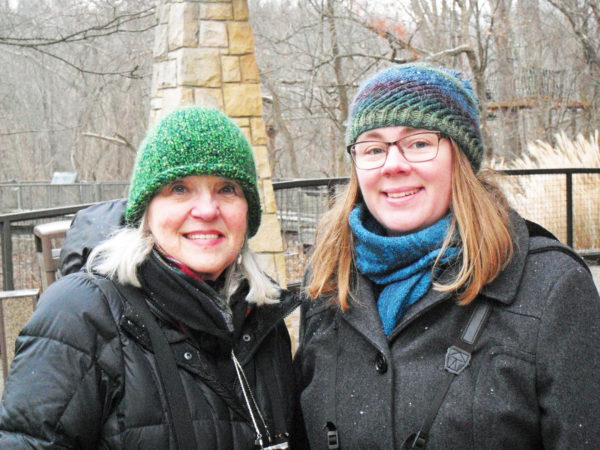
A LONG HISTORY
This kind of competitive spirit is what started the count, which now stretches across not only the U.S., but the rest of North America and areas of South America that are wintering grounds for “American” birds.
Larry Helgerman of Elm Grove — co-compiler with Check of the Wheeling count and state editor of all the counts in West Virginia — said the idea started back when shooting birds on Christmas Day and then counting bodies was a thing.
Over the holiday season of 1899-1900, bird-lovers wisely turned to counting without killing, and the world’s longest-running bird census was born, Helgerman said.
THRILL OF THE HUNT
He’s glad the shooting’s over, but he gets it.
“I’m all overall naturalist. I like everything outdoors,” Helgerman said. “(Birds) are so dynamic. They move around; they’re colorful. A lot of it has to do with the hunt.
“A lot of the expert birders prize finding some individual species, but it’s all about the numbers,” Helgerman said of his personal philosophy of getting a broad snapshot of what is out there.

The longevity of the data collected in the counts is critical, he said. While any one count can be affected by the number and skill of birders in the field, or the weather — there is a big-data picture that emerges over time.
Locally, he said one trend that has been easy to see without much number crunching is an uptick in bald eagles, which were classified as endangered until recently.
“Twenty years ago, if we saw an eagle, that would have been unbelievable,” he noted, adding the species now makes pretty much every count.
That said, he does have one favorite species that feels like an accomplishment. “Winter wrens: That’s just a nice little bird. You may only get one or two in a winter count.”

Check said she enjoys seeing the color splash of golden-crowned kinglets. Her hope this year was something even more dazzling.
“What would be most exciting is a ruffed grouse,” Check said, noting the numbers of the spectacular species are low.
As dazzling as that species is, Check said she also enjoys the birds as a group, even the most commonly seen. “The mallard is one of the birds I’ve come to appreciate as I’ve gotten older,” she said. “It’s really quite beautiful.”
She also enjoys the peacefulness of the winter count, which unfolds at a slower pace than a similar count of migratory birds in the spring.
“Winter birding is foundational,” Check said. “You slow down in winters and appreciate the male cardinal’s beauty and the friendliness of the chickadees.”
EAR TO THE SKY
Helgerman noted that not all of the birds will actually be seen. An identifiable birdcall can be included in the count. This is especially important for secretive species and at night. (The count technically runs midnight to midnight, although most birders restrict themselves to daylight hours.)
“For nocturnal birds, we’re searching mostly for owls,” Helgerman said of a handful of die-hard counters who continue after nightfall.
He said these counts experts can tell the difference between the more common great-horned owls, barred owls and northern screech owls, and something more rare to Wheeling, such as a northern saw-whet owl or a short-eared owl.
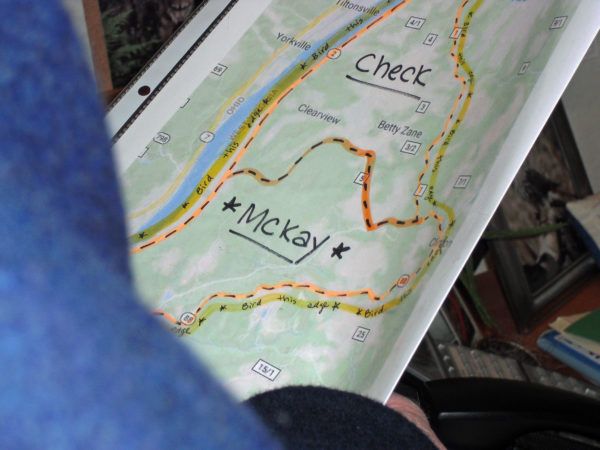
WANT TO BIRD?
This year’s Christmas Bird Count is over locally — although counts elsewhere may be taking place through Jan. 5. But, Helgerman and Check urged area residents who would like to participate in future counts, including a spring one, to get ready now.
Helgerman noted that new birders have two options on count days to plan around.
“There are a lot of folks that feed birds in their yards,” he said. “If you’re counting the birds at your feeder on the day of the count … you don’t have to know all the birds, you just have to write down what you do know. Any bit of information is helpful.”
 Counts can also pair new birders with experts. He said an extra pair of eyes is always helpful, particularly during the driving portions of the count.
Counts can also pair new birders with experts. He said an extra pair of eyes is always helpful, particularly during the driving portions of the count.
New birders can begin preparing for either scenario right now.
Schrader Center offers bird identification programs involving feeders through the winter. Naturalists there also guide bird walks in warm weather, Check said.
And, any time of year, would-be birders can attend public meetings of the Brooks Bird Club. That storied group meets monthly and hosts multiple birding events throughout the year, Helgerman said.
Visit the Brooks Bird Club’s website for more information.
• A long-time journalist, Nora Edinger also blogs at noraedinger.com and Facebook and writes books. Her Christian chick lit and faith-related non-fiction are available on Amazon. She lives in Wheeling, where she is part of a three-generation, two-species household.


